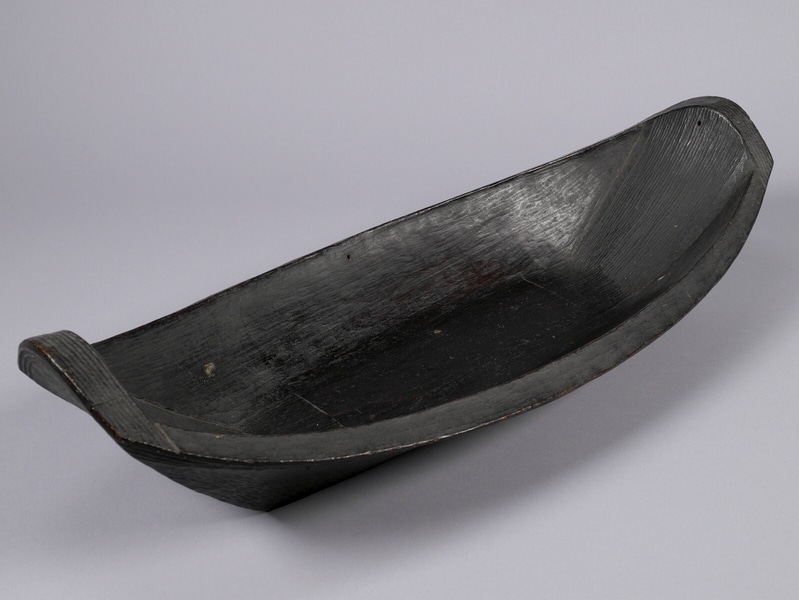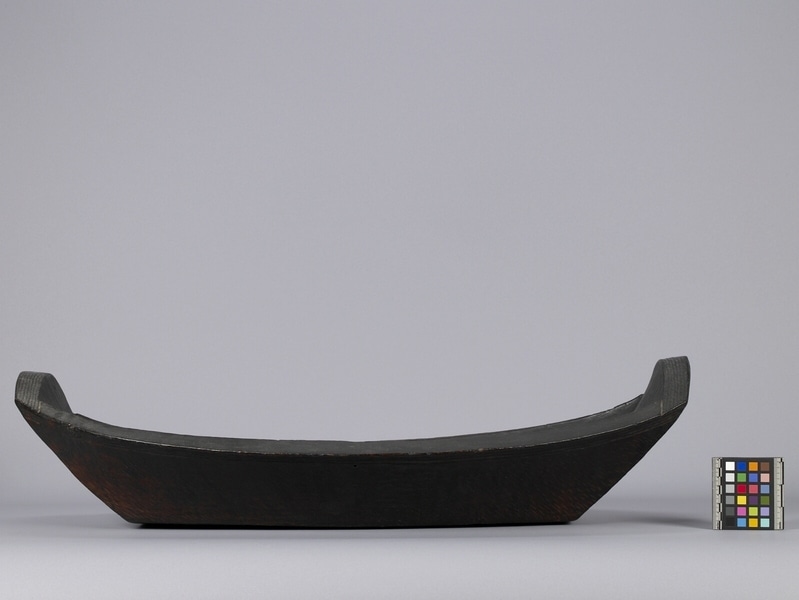Dish Item Number: A2175 from the MOA: University of British Columbia



Description
Dark brown, black in colour, canoe-shaped wooden dish with adze marks on both inner and outer surfaces. Three rows of incised lines follow the outer rim. Vertical adze marks run across the interior surface from one end of the bowl to the other while the sides have horizontal marks. Small holes drilled near the upper centre of each end, and the top of one side.
History Of Use
Barnett (1955) notes that bath-tub shaped dishes, like this one, are characteristic of the Straight of Georgia region. These dishes, which were generally made from one piece of hollowed out wood, were usually three to five feet in length. He noted that the smaller versions, like this one, were often used as oil dishes. Large dishes were used at feasts, and placed before one to three distinguished visitors, with the intent of making an imposing offering. Feasts and potlatches are usually held to celebrate a change in status of a family member. Guests are invited to witness, and thereby make legitimate events such as the transfer of a name. They are also held to celebrate marriages and as memorials for deceased family members.
Cultural Context
domestic; ceremonial
Item History
- Made in British Columbia, Canada before 1930
- Collected in Koksilah, British Columbia, Canada between 1893 and 1934
- Owned by George H. Raley before November 1948
- Received from H. R. MacMillan (Funding source) and George H. Raley (Seller) during November 1948
What
Who
- Culture
- Coast Salish: Quwutsun'
- Previous Owner
- George H. Raley
- Received from
- H. R. MacMillan (Funding source) and George H. Raley (Seller)
Where
- Holding Institution
- MOA: University of British Columbia
- Made in
- British Columbia, Canada
- Collected in
- Koksilah, British Columbia, Canada
When
- Creation Date
- before 1930
- Collection Date
- between 1893 and 1934
- Ownership Date
- before November 1948
- Acquisition Date
- during November 1948
Other
- Condition
- good
- Accession Number
- 1960/0296